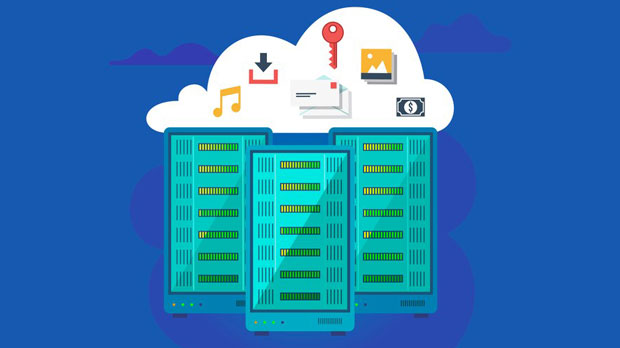The growing demand for online privacy and anonymity has led to a surge in the use of proxy services. Among the various proxy types available, socks5 proxy on Android and data center proxies are two widely used options. Both provide distinct advantages depending on the specific use case, but understanding their differences is crucial to selecting the right one. In this article, we will compare sock s5 proxies on Android and data center proxies, examining their features, performance, security, and application scenarios. This comprehensive analysis will help users make an informed decision on which proxy best suits their needs. 1. Understanding SOCKS5 Proxy on AndroidSOCKS5 (Socket Secure version 5) proxy is a versatile and secure method of routing internet traffic. Unlike traditional HTTP or HTTPS proxies, SOCKS5 does not filter or modify the data packets it forwards. This means that it supports all types of internet traffic, including web browsing, file sharing, and gaming. The flexibility of SOCKS5 makes it suitable for a wide range of use cases, especially on Android devices.Android users often leverage SOCKS5 proxies to enhance privacy and access geo-restricted content. By masking the user's IP address and routing traffic through a remote server, a SOCKS5 proxy adds a layer of anonymity. Moreover, it allows users to bypass censorship or geo-blocked websites, making it a popular choice for accessing content that might otherwise be unavailable in specific regions.2. Exploring Data Center ProxiesData center proxies, on the other hand, are proxies that originate from data centers. These proxies are provided by companies that host a large number of servers in facilities designed specifically for hosting purposes. Unlike residential proxies that use IP addresses from real residential locations, data center proxies use IP addresses from data centers, which are often faster and more reliable but may be easier to detect by websites.The main appeal of data center proxies lies in their speed and efficiency. They are widely used for tasks such as web scraping, automation, and bulk data extraction because they can handle large volumes of traffic at high speeds. They are also favored for SEO-related tasks where multiple requests need to be sent to search engines or websites without getting blocked. However, the main downside is that data center proxies are more likely to be blacklisted by websites compared to residential proxies or SOCKS5 proxies due to their IP origins.3. Key Differences Between SOCKS5 Proxy on Android and Data Center ProxiesThe primary differences between SOCKS5 proxy on Android and data center proxies can be grouped into several categories, including speed, security, privacy, and usage scenarios.3.1 Speed and PerformanceWhen it comes to speed, data center proxies typically outperform SOCKS5 proxies on Android. This is because data center proxies are directly connected to high-performance servers with fast internet connections, enabling them to deliver faster speeds for activities like web scraping, bulk data collection, and automation tasks.However, SOCKS5 proxies on Android, while generally slower than data center proxies, offer sufficient performance for most consumer activities such as browsing, streaming, and gaming. They are particularly valuable for users seeking a balance between speed and privacy on mobile devices.3.2 Security and PrivacySOCKS5 proxies on Android are considered more secure than data center proxies. Since SOCKS5 does not modify or filter the data it handles, it maintains the integrity of the traffic, making it harder for third parties to track or block users. Additionally, SOCKS5 supports authentication, adding another layer of security to the connection.Data center proxies, while offering high speeds, are often considered less secure and more prone to being detected and blocked. Websites and services can easily identify data center proxies based on their IP addresses. For users concerned about online privacy and security, SOCKS5 proxies offer better protection, especially when combined with encryption.3.3 Detection and BanningDue to their origin in data centers, data center proxies are highly susceptible to detection and banning by websites and services. Websites may recognize patterns associated with data center IPs, such as unusual browsing behaviors or large amounts of traffic from a single source, and block or flag these IPs accordingly.SOCKS5 proxies on Android, while not entirely immune to detection, are harder to trace back to a specific data center. This makes them less likely to be flagged or banned by websites. The increased anonymity provided by SOCKS5 proxies makes them a better choice for users looking to avoid detection while accessing sensitive or restricted content.3.4 Use Cases and ApplicationsThe use cases for SOCKS5 proxies on Android and data center proxies differ significantly due to their distinct strengths and weaknesses.- SOCKS5 Proxy on Android: This type of proxy is ideal for individuals seeking enhanced privacy and the ability to access restricted content on their mobile devices. It is a great option for browsing, gaming, streaming, and bypassing geographical restrictions. Android users who prioritize anonymity and security over raw speed will find SOCKS5 proxies suitable for their needs.- Data Center Proxies: Data center proxies excel in high-volume, high-speed tasks like web scraping, automation, and bulk data collection. They are frequently used in SEO optimization, market research, and other commercial applications. However, they are not the best option for users who need strong privacy or are concerned about being detected by websites.4. Pros and Cons of SOCKS5 Proxy on Android4.1 Pros- High privacy and anonymity: SOCKS5 hides the user's real IP address, providing increased anonymity.- Supports all types of traffic: Ideal for various activities like gaming, streaming, and file sharing.- Encryption support: SOCKS5 can be used with encryption for enhanced security.4.2 Cons- Slower speeds: Typically slower than data center proxies, especially for data-heavy tasks.- Not suitable for high-volume tasks: Limited performance for web scraping or large-scale data extraction.5. Pros and Cons of Data Center Proxies5.1 Pros- Faster speeds: Data center proxies offer high performance, making them ideal for tasks requiring large volumes of data.- Better for SEO and automation: Perfect for web scraping, automation, and bulk data extraction.5.2 Cons- Higher risk of detection: Data center proxies are more easily flagged and banned by websites.- Less privacy: More vulnerable to tracking compared to SOCKS5 proxies.6. Conclusion: Which One to Choose?The choice between SOCKS5 proxy on Android and data center proxies largely depends on the user's specific needs. If privacy, security, and accessing geo-restricted content on mobile devices are a priority, SOCKS5 proxies are the better choice. They provide a good balance of speed and privacy, making them suitable for general use.On the other hand, for high-speed, high-volume tasks such as web scraping, SEO, and automation, data center proxies are the go-to solution. They provide unmatched speed and performance, though at the cost of privacy and security.Ultimately, users should assess their requirements, weighing factors like privacy, speed, and the nature of the tasks they intend to perform. By doing so, they can make an informed decision about which type of proxy best suits their needs.
Sep 18, 2025



































































